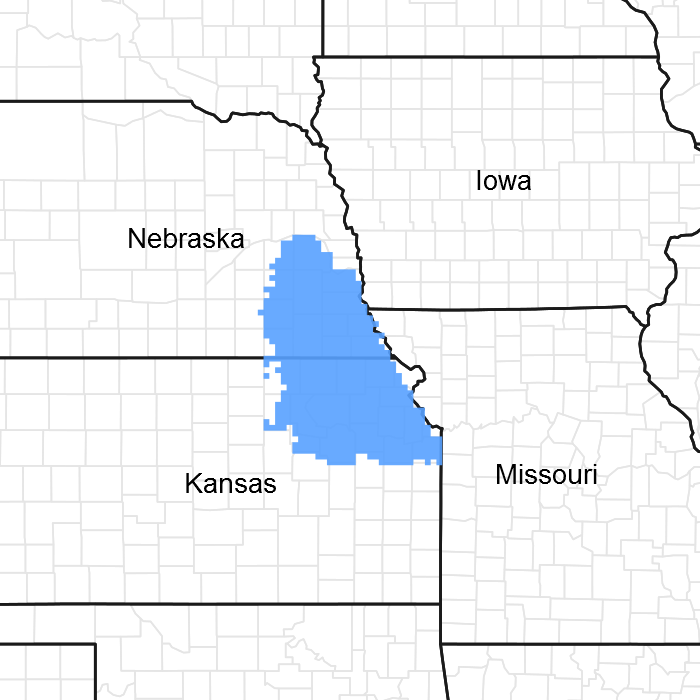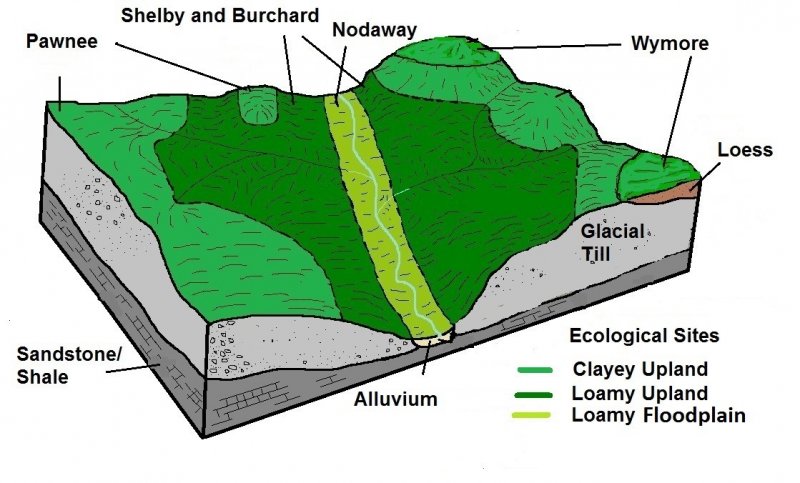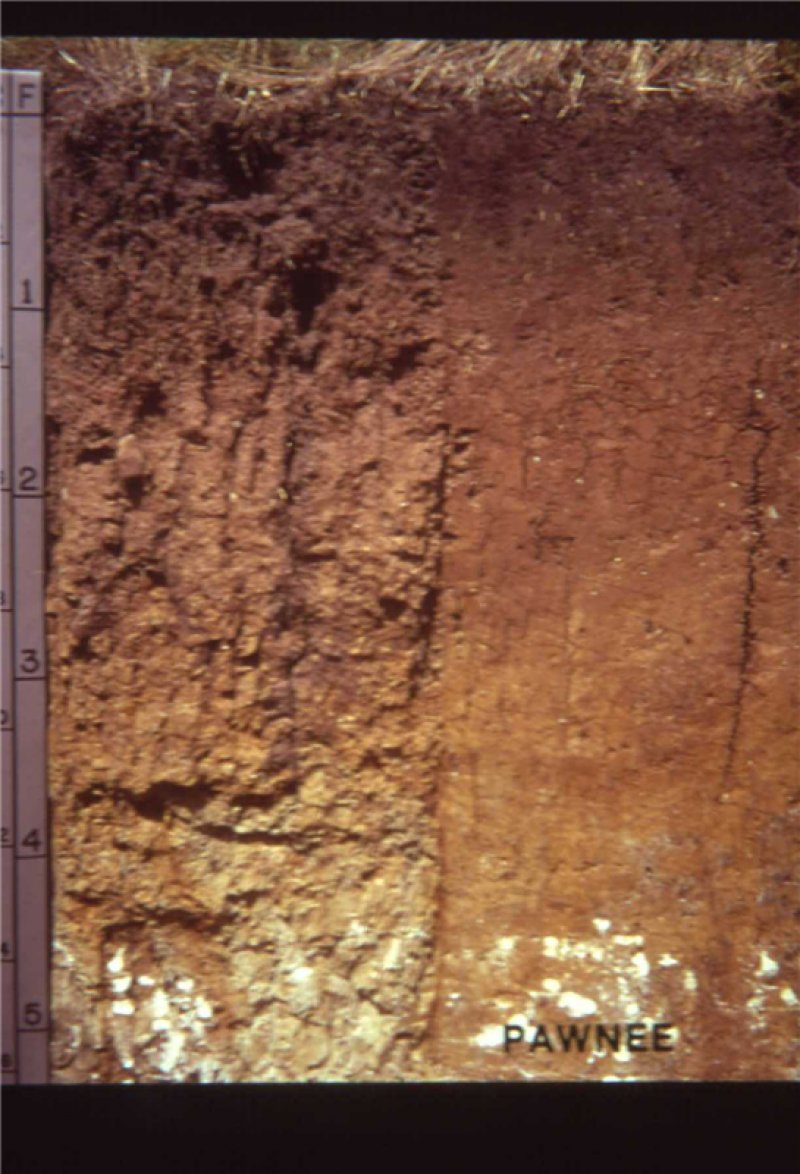Ecological dynamics
The Clayey Upland ecological site developed under Central Great Plains climatic conditions, light to severe grazing by bison and other large herbivores, sporadic natural or man caused wildfire, and other biotic and abiotic factors that typically influence soil and site development. This continues to be a disturbance driven site by herbivory, fire, and variable climate. Changes occur in the plant communities due to short term weather variations, impacts of native and exotic plant and animal species, and management actions.
The Clayey Upland ecological site developed with fire as an integral part of the ecological processes. Historically, a given area burned on average every 3 to 4 years. Distribution was random, but timing corresponded to the summer season when convective thunderstorms are most likely to occur. However, it is also believed that pre-European settlement in North America, Indigenous people used fire as a management tool for attracting herds of large migratory herbivores as well as for warfare. The role of fire over the past 100 years has been insignificant due to the human control of wildfires and general lack of acceptance of prescribed fire as a management tool. In this region where natural precipitation is capable of supporting eastern deciduous forest, much of this site is vulnerable to encroachment by woody species when fire is removed from the system.
Fire historically played a critical role in maintaining the heterogeneity of this system by removing decadent plant material and creating highly palatable new growth. Large herbivores were attracted to the burned areas and created "grazing lawns". These areas were repeatedly grazed until a new burned area attracted herbivores and reduced grazing pressure in the older burn area. The heterogeneity of vegetative diversity and structure of the landscape created by the numerous patches in various states of vegetative recovery was essential to maintaining a diverse wildlife population. These conditions created the array of seasonal niches necessary for the various wildlife species to thrive. Grassland birds are one suite of species whose habitat requirements are particularly dependent on the mosaic of vegetative structure created by the pyric herbivory/ungulate interactions. Patch burn grazing is an emerging management concept that attempts to emulate this historic system. The degree of herbivory has significant impacts on ecological processes such as nutrient cycling and sunlight capture. Historically, these sites were highly attractive to herds of large migratory herbivores, and grazing patterns and impacts were a primary influence. Secondary influences of herbivory by species such as insects, rodents, and root feeding organisms impacted the vegetation historically, and continue to this day (Helzer, 2010).
The Reference Community (1.1) for this site is tall grass prairie occurring on higher, stable landscape positions that generate runoff. Gentler slopes comprise well developed soils with favorable precipitation capture and retention, while steeper areas will exhibit higher runoff with carbonates remaining near the surface. Under normal weather and soil conditions, sunlight and energy capture are a primary factor limiting plant growth, making this site ideal to support warm-season tall grass communities. The vegetation on this site is locally impacted by topography, and the steepness and aspect of the slope interact with the other ecological processes to further influence vegetative dynamics. The north and east facing slopes are usually cooler and wetter, which results in increased vegetative production but favors invasion by trees and shrubs as well. This often makes these slopes more resistant to restoration of the native grasslands by fire. These areas may require use of specific ignition techniques when conducting a prescribed burn to ensure mortality of invading trees.
One of the primary impacts to this site introduced by European settlement of North America is due to season long continuous grazing by domestic livestock. This grazing strategy causes the repeated removal of the growing point and excessive defoliation of the leaf area of individual grasses. The resulting reduction of the plants ability to harvest sunlight depletes the root reserves, subsequently decreasing the root mass. This negatively impacts the ability of plants to compete for life sustaining nutrients resulting in declining vigor and eventual mortality. Grasses with highly elevated growing points (e.g., big bluestem, Indiangrass, gamagrass) and preferred shrubs are the most susceptible to growing season defoliation and typically the first to decrease under unmanaged grazing. The space created in the vegetative community is then occupied by a species that avoids the negative grazing impacts by a growing season adaptation such as a cool-season, shorter structure, or reduced palatability mechanism. Noxious weeds such as leafy spurge, sericea lespedeza, nodding plumeless (musk) thistle, and Canada thistles may take advantage of reduced native cover and vigor; however, the cool season grasses, smooth brome and tall fescue, pose the greatest invasion threat. Smooth brome is the dominant invader in northern portions of the MLRA while tall fescue is more common in the southern portions.
Whereas herds of native ungulates could move freely across the landscape in response to changing conditions, livestock use is constrained in space and often repeated over time, producing a more homogeneous landscape. The management of herbivory by humans through grazing of domestic livestock and manipulation of wildlife populations has been a major modern influence on the ecological dynamics (USDA/SCS, 1977). Additionally, the favorable growing conditions and topography that historically made this one of the largest contributors to the true prairie habitat type in MLRA 106 have also made it one of the most extensively cropped today leaving a fraction of the prairie intact.
The State and Transition Model (STM) is depicted following this section and includes a Reference State (1), a Native/Invaded Grass State (2), a Sod-busted State (3), and an Invaded Woody State (4). Each state represents the crossing of a major ecological threshold due to alteration of the functional dynamic properties of the ecosystem. The main properties observed to determine this change are the soil, vegetative communities, and the hydrological cycle. The STM illustrates the common plant communities that can occur on the site and the transition pathways between communities (Bestelmeyer, 2010). The ecological processes will be discussed in more detail in the plant community descriptions following the diagram.
Each state may have one or more vegetative communities that fluctuate in species composition and abundance within the normal parameters of the state. Within each state, communities may degrade or recover in response to natural and man caused disturbances such as variation in the degree and timing of herbivory, presence or absence of fire, and climatic and local fluctuations in the precipitation regime.
Interpretations are primarily based on the Reference State and have been determined by study of rangeland relic areas, areas protected from excessive disturbance, and areas under long term rotational grazing regimes. Trends in plant community dynamics have been interpreted from heavily grazed to lightly grazed areas, seasonal use pastures, and historical accounts. Plant communities, states, transitional pathways, and thresholds have been determined through similar studies and experience. The Reference Community (1.1) has been determined by study of rangeland relic areas, areas protected from abusive disturbance, seasonal use pastures, areas under long term rotational grazing practices, and historical accounts.
State 1
Reference State
The Reference State (1) comprises the communities within the range of natural variability under historic conditions and disturbance regimes. Patterns created by wildlife use and fire supported a mosaic of communities across the landscape. Warm-season tall grasses are dominant, with subdominant contributions from warm-season mid grasses, cool-season grasses, forbs, and shrubs. Eastern gamagrass is uncommon to absent in the northern half of the MLRA but becomes increasingly common southward. Conversely, cool-season grasses, such as porcupinegrass and Canada wildrye, are more prominent in northern portions of the MLRA. High perennial grass cover allows for increased soil moisture retention, vegetative production, and overall soil quality.
Fire and bison herbivory were the dominant disturbance regimes that historically maintained the tall grass dominance with a diverse forb component. Furthermore, bison grazing was closely linked to fire patterns as the animals preferred grazing burned areas offering highly palatable and nutritious regrowth. Thus, historic plant communities were subject to occasional burning and grazing, with substantial rest and recovery periods as the fuel load accumulated to eventually start this process again. Fires also served to suppress woody species and to maintain an open herbaceous stand. The degree to which current conditions represent this state depends upon how closely contemporary management has mimicked these past disturbance effects.
The Reference State includes the Reference Community (1.1), the Degraded Native Grass Community (1.2), the At-Risk Community (1.3), and the Excessive Litter Community (1.4).
Community 1.1
Reference Community
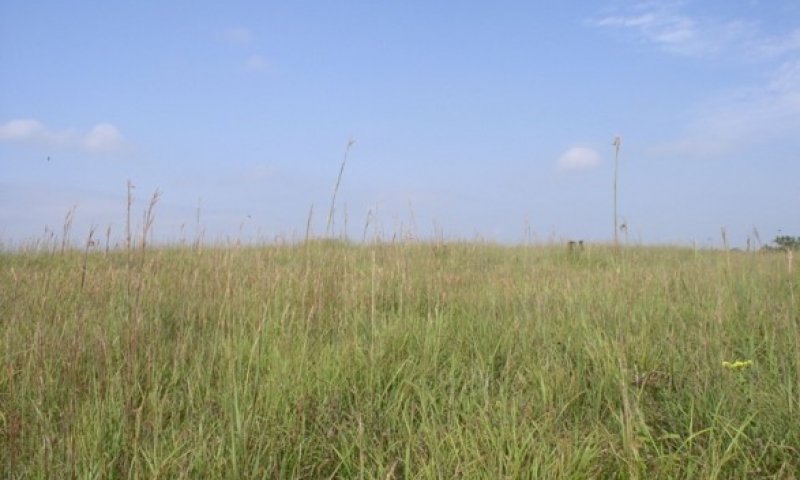
Figure 10. Reference Community for the Clayey Upland site in MLRA 106, Gage County, Nebraska.
The Reference or Native Tallgrass Prairie Community (1.1) is dominated by native, perennial, warm-season tall and mid grasses which are co-dominant groups. The composition of the Reference Community is 75 to 90 percent grasses and grass-likes, 5 to 10 percent forbs, and 0 to 10 percent shrubs, based upon total annual air-dry weight production. Big bluestem, Indiangrass, little bluestem, porcupinegrass, sideoats grama, and switchgrass are the dominant species making up 70 percent or more of the total annual production. Blue grama, prairie junegrass, Scribner’s rosette grass, composite dropseed and various sedges, shrubs, and forbs are also important plants to the site (Kaul 2006, Steinauer 2010, USDA/NRCS 2012). Differences in the production curve may vary with green up being increasingly later in the spring as one moves from south to north within the MLRA.
This plant community is very stable but there is annual variability of expression of the dominant plant species based on current climate and local disturbances. Late spring fires will stimulate warm-season plants while suppressing cool-season grasses and forbs. There is little or no soil loss and runoff is very limited.
The total annual production ranges from 2800 to 4900 pounds of air dry vegetation per acre per year with a representative value of 3800 pounds per acre.
Table 5. Annual production by plant type
| Plant type |
Low
(lb/acre) |
Representative value
(lb/acre) |
High
(lb/acre) |
| Grass/Grasslike |
2610 |
3400 |
4275 |
| Forb |
165 |
285 |
450 |
| Shrub/Vine |
35 |
115 |
215 |
| Tree |
0 |
0 |
0 |
| Total |
2810 |
3800 |
4940 |
| Jan |
Feb |
Mar |
Apr |
May |
Jun |
Jul |
Aug |
Sep |
Oct |
Nov |
Dec |
| J |
F |
M |
A |
M |
J |
J |
A |
S |
O |
N |
D |
Community 1.2
Degraded Native Grass Community
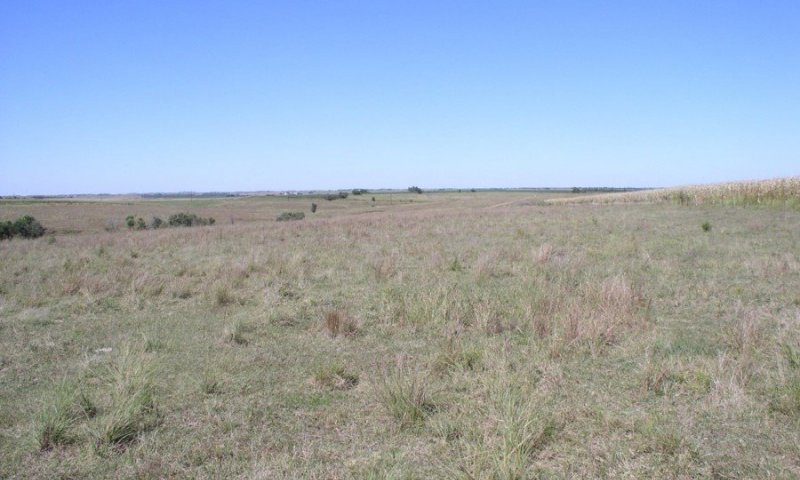
Figure 13. Clayey Upland ecological site, Degraded Native Grass Community (1.2), southeast Nebraska, MLRA 106,
The Degraded Native Grass Community (1.2) marks a significant reduction in native, perennial, warm-season tall grasses. Native, perennial, warm-season mid grasses are dominant while native, perennial, warm-season tall grasses have become subdominant. The tall grasses have decreased due to continued excessive defoliation or prolonged drought. Warm-season mid grasses such as little bluestem and sideoats grama have increased to fill the void left by declining tall grass species. These species are not as productive as the species they replace, causing a decline in vegetative biomass and forage compared to the Reference Community (1.1) They are also less deeply rooted, and create less residue, contributing to reduced efficiencies in the nutrient, mineral, and hydrologic cycles, all factors impacting overall soil health.
Total average annual production ranges from 2,950 to 3,800 pounds of air-dry pounds per acre with a representative value of 3,400 pounds per acre.
Community 1.3
At-Risk Community
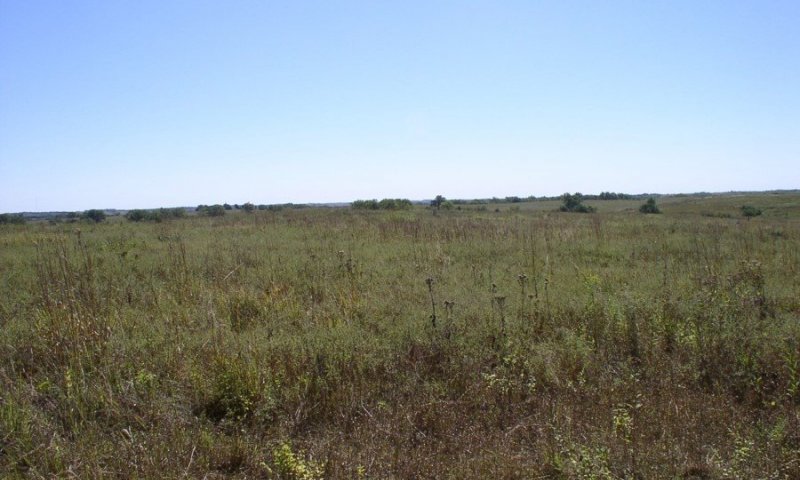
Figure 14. Clayey Upland ecological site, At-Risk Community (1.3), southeast Nebraska, MLRA 106.
In the At-Risk Community (1.3), the more palatable native, perennial, warm-season tall grasses have been reduced to a minor component of the plant community by continued defoliation during their critical growth periods. Native, perennial, warm-season, mid and short grasses and cool-season grasses have increased significantly. Introduced grasses, such as Kentucky bluegrass, smooth brome, or tall fescue, have begun to encroach on flatter slopes and may be a minor component of the plant community.
Soil health is affected by reduced efficiency in the nutrient, mineral, and hydrologic cycles as a result of decreases in plant litter and rooting depths.
Community 1.4
Excessive Litter Community
The Excessive Litter Community (1.4) phase describes the response of the community to the prolonged (greater than 5 years) removal of the natural disturbances of herbivory and fire. As the undisturbed litter layer deepens, the plant community becomes over-mature.
Pathway 1.1A
Community 1.1 to 1.2
Degraded Native Grass Community
A shift from the Reference Community (1.1) to the Degraded Native Grass Community (1.2) occurs with continuous season long grazing or with rotational grazing with inadequate growing season recovery periods. This shift will also occur when the land is hayed multiple times during the growing season with inadequate recovery between haying events.
Pathway 1.1B
Community 1.1 to 1.4
Prolonged absence (greater than 5 years) of the natural disturbances herbivory and fire cause the Reference Community (1.1) to shift to the Excessive Litter Community (1.4).
Pathway 1.2A
Community 1.2 to 1.1
Degraded Native Grass Community
Prescribed grazing and managed haying timed to allow growing season rest of warm-season tall grasses species moves the Degraded Native Grass Community (1.2) to the Reference Community (1.1). Prescribed grazing which includes deferment of grazing until late summer after the peak growing period of warm-season species or other grazing strategies focusing on the health and vigor of the warm-season tall grasses will allow them to increase in abundance. Following prolonged drought, reduced stocking rates or growing season deferment will alleviate the impact of inadequate soil moisture.
| Prescribed Burning |
|
| Prescribed Grazing |
|
Pathway 1.2B
Community 1.2 to 1.3
Degraded Native Grass Community
Continuation of continuous season long grazing, rotational grazing with inadequate growing season recovery time, or multiple haying operations with inadequate recovery time results in the shift from the Degraded Native Grass Community (1.2) to the At-Risk Community (1.3). Any combination of timing, frequency, or degree of herbivory and haying that negatively impacts warm-season tall and mid grass species or long-term drought cause the plant community to degrade.
Pathway 1.2C
Community 1.2 to 1.4
Prolonged absence (greater than 5 years) of the natural disturbances herbivory and fire cause the Degraded Native Grass Community (1.2) to shift to the Excessive Litter Community (1.4).
Pathway 1.3A
Community 1.3 to 1.2
Degraded Native Grass Community
Reversing the downward trend that moved the Degraded Native Grass Community (1.2) to the At-Risk Community (1.3) can be achieved with prescribed grazing in early spring and fall to reduce the abundance cool-season grasses. Targeting the peak growth period of cool-season grasses with high intensity grazing events followed by summer deferment will allow the native, warm-season tall and mid grasses to increase in terms of productivity, health, and vigor. Appropriately timed prescribed fire will accelerate this process.
| Prescribed Burning |
|
| Access Control |
|
| Prescribed Grazing |
|
Pathway 1.3B
Community 1.3 to 1.4
Prolonged absence (greater than 5 years) of the natural disturbances herbivory and fire cause a shift from the At-Risk Community (1.2) to the Excessive Litter Community (1.4).
Pathway 1.4A
Community 1.4 to 1.1
Reintroduction of the natural processes of herbivory and fire will allow the vegetation to return to the Reference Community (1.1) from the Excessive Litter Community (1.4).
| Prescribed Burning |
|
| Prescribed Grazing |
|
Pathway 1.4B
Community 1.4 to 1.2
Reintroduction of the natural processes of herbivory and fire will allow the vegetation to return to the Degraded Native Grass Community (1.2) from the Excessive Litter Community (1.4).
| Prescribed Burning |
|
| Prescribed Grazing |
|
Pathway 1.4C
Community 1.4 to 1.3
Reintroduction of the natural processes of herbivory and fire will allow the vegetation to return to the At-Risk Community (1.3) from the Excessive Litter Community (1.4).
| Prescribed Burning |
|
| Prescribed Grazing |
|
State 2
Native/Invaded Grass State
The Native/Invaded Grass State (2) exhibits a co-dominance of native and introduced species. The plant community consists of native, perennial, warm-season, mid and short grasses, native cool-season grasses, and a significant component of introduced grasses. Native, warm-season, tall grasses are either not present or only present as remnant populations. Forb diversity is limited to less palatable species such as ironweed and Cuman ragweed. Impaired energy capture and altered hydrologic function are reflected in reduced vegetative productivity, shallower rooting depth, and degraded soil quality. The Native/Invaded Grass State (2) includes the Native/Invaded Grass Community (2.1) and the Introduced Grass Community (2.2).
Dominant plant species
-
coralberry (Symphoricarpos orbiculatus), shrub
-
western snowberry (Symphoricarpos occidentalis), shrub
-
smooth sumac (Rhus glabra), shrub
-
composite dropseed (Sporobolus compositus), grass
-
prairie dropseed (Sporobolus heterolepis), grass
-
tall fescue (Schedonorus arundinaceus), grass
-
smooth brome (Bromus inermis), grass
-
little bluestem (Schizachyrium scoparium), grass
-
prairie ironweed (Vernonia fasciculata), other herbaceous
-
hoary verbena (Verbena stricta), other herbaceous
-
Cuman ragweed (Ambrosia psilostachya), other herbaceous
Community 2.1
Native/Invaded Grass Community
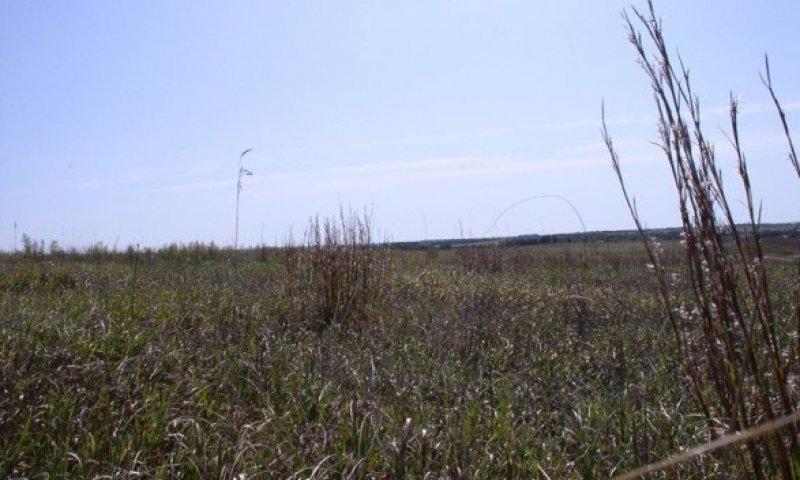
Figure 15. Clayey Upland ecological site, Native Mid- and Shortgrass/Non-Native Grass Community (2.1). Southeast Nebraska, MLRA 106.
The Native/Invaded Grass Community (2.1) represents a shift from the Reference State (1) across a major threshold. With continued undermanaged grazing, little bluestem, dropseeds, native cool-season grasses, and cool-season introduced grasses increase. Smooth brome is the dominant invader in the northern half of the MLRA while tall fescue is common in the south. Kentucky bluegrass may be subdominant throughout. Continuous, heavy grazing pressure will convert this plant community to a sod bound condition, and forb richness and diversity will decrease as well.
Total annual production ranges from 1,800 and 2,900 pounds of air-dry herbage per acre per year, with a representative value of 2,300 pounds per acre.
Community 2.2
Introduced Grass Community

Figure 16. Clayey Upland ecological site, Community 2.2 - Tall Fescue dominated community, MLRA 106.

Figure 17. Clayey Upland ecological site, Community 2.2 - Smooth brome dominated community, Southeast Nebraska, MLRA 106.
In the Introduced Grass Community (2.2), either smooth brome or tall fescue are the dominant species. Kentucky bluegrass may have a significant presence. Native warm-season grasses are either absent or present only as remnants. Smooth brome primarily occurs throughout the northern half of the MLRA, while tall fescue is common in the south. Vegetative production from smooth brome and tall fescue dominated communities can be highly variable depending on the species composition and external inputs such as fertilizer and weed control. In a normal year, biomass produced can range from 2,500 to 3,000 pounds per acre, with a representative value of 2,750 pounds per acre where introduced cool-season grasses make up 75 percent or more of the species composition.
Pathway 2.1A
Community 2.1 to 2.2
Native/Invaded Grass Community
Introduced Grass Community
Continued heavy, continuous season long grazing or continued, heavy grazing during the warm season portion of the grazing season will result in further expansion and dominance of non-native cool-season grasses converting the Native/Invaded Grass Community (2.1) to the Introduced Grass Community (2.2). Site structure and function resemble a seeded pasture monoculture, although scattered natives may still be found. The seeding of introduced grasses, mid to late summer haying, and early or late and/or excessive nitrogen fertilization will increase cool-season invaders.
Pathway 2.2A
Community 2.2 to 2.1
Introduced Grass Community
Native/Invaded Grass Community
The Introduced Grass Community (2.2) can be returned to the Native/Invaded Grass Community (2.1) by initiating a grazing strategy that focuses grazing pressure during the active growth period of the cool-season grasses while providing rest during the warm season portion of the grazing season. Prescribed fire used in conjunction with a cool season grazing program will accelerate the process. In the presence of a viable native seedbank, nonselective herbicides applied in the early spring and late fall when introduced cool-season grasses are actively growing can be beneficial. Established stands of introduced cool-season grasses may require complete renovation with herbicide treatment followed by reseeding of the native vegetation. Once the warm-season grasses are reestablished, ongoing prescribed grazing and fire management with adequate recovery periods (deferment) during the summer months is critical to prevent the return of the nonnative, cool-season grasses.
| Prescribed Burning |
|
| Prescribed Grazing |
|
State 3
Sod-busted State
The threshold to the Sod-busted State (3) is crossed as a result of mechanical disturbance to facilitate production agriculture. Extensive areas of this ecological site were plowed and converted to crop production by early European settlers and their subsequent generations. In addition to permanently altering the existing vegetative community, repeated tillage negatively impacted soil properties. Reductions in organic matter, mineral levels, soil structure, oxygen levels, and water holding capacity along with increased runoff and erosion as well as shifts in the populations of soil dwelling organisms were common on these sites. The extent of these changes depended upon the duration of cropping as well as crops grown and other management practices.
If farming operations are suspended, the site can be abandoned or seeded to permanent vegetation. Seedings are either a tame pasture forage mixture, the Seeded Pasture Community (3.2), or a mixture of native grasses and forbs, the Reseeded Native Grass Community (3.1). Abandonment results in the Natural Reclamation Community (3.3). Permanent alterations of the soil, plant community, and the hydrologic cycle make restoration to the Reference State (1) extremely difficult, if not impossible.
Community 3.1
Reseeded Native Grass Community
The Reseeded Native Grass Community (3.1) does not contain native remnants, and varies considerably depending upon the seed mixture, the degree of soil erosion, the age of the stand, fertility management, and past grazing management. Prescribed grazing with adequate recovery periods will be required to maintain productivity and desirable species.
Native range and grasslands seeded to native species are ecologically different and should be managed separately. Factors such as functional group, species, stand density, and improved varieties all impact the production level and palatability of the seedings. Species diversity is often limited, and when grazed in conjunction with native rangelands, uneven forage utilization may occur.
Total annual production during an average year varies significantly depending upon precipitation, management, grass species seeded, and the extent to which soils and hydrologic function have been impacted by previous farming operations.
Community 3.2
Seeded Pasture Community
The Seeded Pasture Community (3.2) does not contain native remnants and varies considerably depending upon the extent of soil erosion, the species seeded, the quality of the stand that was established, the age of the stand, and management of the stand since establishment.
There are several factors that make seeded tame pasture a different grazing resource than native rangeland and land seeded to a native grass mixture. Factors such as species selected, stand density, improved varieties, and harvest efficiency all impact production levels and palatability. Species diversity on seeded tame pasture is often limited to a few species. When seeded pasture and native rangelands or seeded pasture and seeded rangeland are in the same grazing unit, uneven forage utilization will occur. Improve forage utilization and stand longevity by managing this community separately from native rangelands or land seeded to native grass species.
Total annual production during an average year varies significantly depending upon precipitation, management, grass species seeded, and the extent to which soils and hydrologic function have been impacted by the previous farming operations. Improved varieties of warm-season or cool-season grasses are recommended for optimum forage production.
Community 3.3
Natural Reclamation Community
The Natural Reclamation Community (3.3) consists of annual and perennial weeds and less desirable grasses. These sites have been farmed and abandoned without being reseeded. Soil organic matter and carbon reserves are reduced, soil structure is changed, and a plow pan or compacted layer can form, which decreases water infiltration. Residual synthetic chemicals may remain from farming operations. In early successional stages, this community is not stable. The hazard of erosion is a concern.
Total annual production during an average year varies significantly depending on the succession stage of the plant community and any management applied to the system.
State 4
Invaded Woody State
The Invaded Woody State (4) is the result of woody encroachment. Once the tree canopy cover reaches 15 percent with an average tree height exceeding five feet, the threshold is crossed. Woody species are encroaching due to lack of prescribed fire and other brush management practices. Typical ecological impacts are a loss of native grasses, degraded forage productivity, and reduced soil quality. This state consists of the Invaded Woody Community (4.1)
Prescribed burning, wildfire, timber harvest and brush management will move this state toward a grass dominated state. If the Invaded Woody State (4) transitioned from the Native/Invaded Grass State (2) or the Sod-busted State (3), the land cannot be restored to the Reference State (1) as the native plant community, soils, and hydrologic function had been too severely impacted prior to the woody encroachment to allow restoration to the Reference State.
Community 4.1
Invaded Woody Community
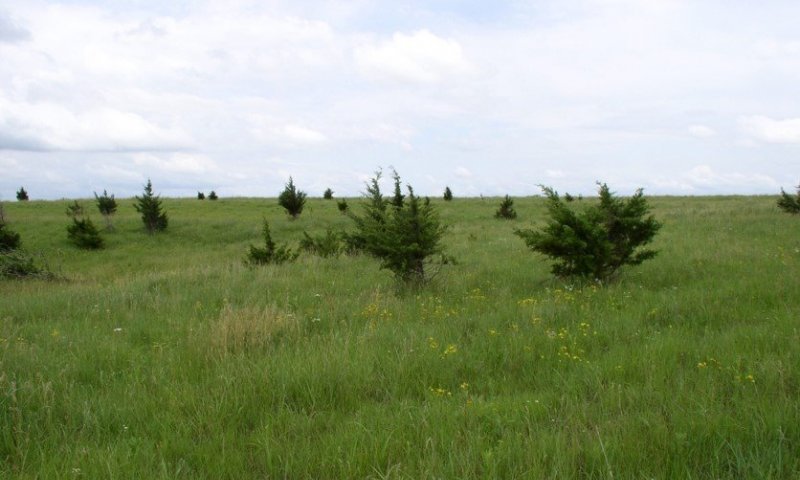
Figure 18. Clayey Upland ecological site, Invaded Woody Community (4.1). Grassland invaded by eastern redcedar in southeast Nebraska, MLRA 106.
The Invaded Woody Community (4.1) has at least 15 percent canopy cover consisting of trees generally 5 feet or taller. Encroaching trees are primarily eastern red cedar but honey locust, Siberian elm, roughleaf dogwood, and other species may also be present. Additional woody cover from deciduous trees and shrubs may be present. In the absence of fire and brush management, this ecological site is very susceptible to eastern red cedar seedling invasion, especially when adjacent to a seed source. Eastern red cedar can eventually dominate the site resulting in a closed canopy monoculture which drastically reduces forage production, and which has limited value for either livestock grazing or wildlife habitat. Due to fire suppression over many years, this plant community will develop extensive ladder fuels which can lead to a removal of most tree species with a wildfire. With properly managed intensive grazing, encroachment of deciduous trees will be minimal; however, this will not impact encroachment of conifer species. The herbaceous component decreases proportionately in relation to the percent canopy cover, with the reduction being greater under a conifer overstory. Eastern red cedar control can usually be accomplished with prescribed burning while the trees are six feet tall or less and fine fuel production is greater than 1,500 pounds per acres. Larger red cedars can also be controlled with prescribed burning, but successful application requires the use of specifically designed ignition and holding techniques (https://www.loesscanyonsburngroup.com).
Re-sprouting brush must be chemically treated immediately after mechanical removal to achieve effective treatment. The forb component will initially increase following tree removal. To prevent return to a woody dominated community, ongoing brush management such as hand cutting, chemical spot treatments, or periodic prescribed burning is required. This plant community is resistant to change and resilient given normal disturbances. In higher canopy cover situations, the soil erosion will increase in relation to most of the plant communities from which this plant community originated. The water cycle is also significantly altered under higher canopy cover. Infiltration is reduced and runoff is typically increased because of a lack of herbaceous cover and the rooting structure provided by the herbaceous species. Total annual production during an average year varies significantly, depending on the production level prior to encroachment and the percentage of canopy cover.
Transition T1A
State 1 to 2
The transition from the Reference State (1) to the Native/Invaded Grass State (2) typically occurs with continuous, season long grazing or with rotational grazing with inadequate growing season recovery periods. Repeated growing season haying causes a similar species composition shift in the plant community.
Repeated defoliation of preferred native, warm-season tall and mid grass species during their active growth period reduces plant vigor and competitiveness. This facilitates an increase of the more grazing tolerant grasses including warm-season short grasses and non-native cool-season species. In response to repeated defoliation, this community will shift to less palatable, more grazing tolerant species including non-native, cool-season invaders such as smooth brome and tall fescue. As this management strategy continues, non-native species colonize and expand to such a degree that restoration to the Reference State (1) through grazing management alone is unlikely. The native forb and shrub component is also affected by the season and degree of livestock pressure.
Transition T1B
State 1 to 3
The Reference State (1) is significantly altered by mechanical tillage converting site to the Sod-busted State (3) to facilitate production agriculture. The disruption to the plant community, the soil and the hydrology of the system make restoration to a true reference state unlikely.
Transition T1C
State 1 to 4
Disruption of the natural fire regime and encroachment of invasive exotic and native woody species can cause the Reference State (1) to shift to the Invaded Woody State (4).
Transition T2A
State 2 to 3
The Native/Invaded Grass State (2) is significantly altered by mechanical tillage converting site to the Sod-busted State (3) to facilitate production agriculture. The disruption to the plant community, the soil and the hydrology of the system make restoration to a true reference state unlikely.
Transition T2B
State 2 to 4
Disruption of the natural fire regime and encroachment of invasive exotic and native woody species can cause the Native/Invaded Grass State (2) to shift to the Invaded Woody State (4).
Transition T3A
State 3 to 4
Disruption of the natural fire regime and the encroachment of invasive exotic and native woody species can cause the Sodbusted State (3) to shift to the Invaded Woody State (1).
Restoration pathway R4A
State 4 to 1
Prescribed burning, wildfire, harvest, and brush management will move the Invaded Woody State (4) toward the Reference State (1). The forb component of a site with heavy tree density or canopy cover may initially increase following tree removal through mechanical brush management treatments and prescribed fire. If resprouting brush is present, stumps must be chemically treated immediately after mechanical removal. Ongoing brush management such as hand cutting, chemical spot treatments, or periodic prescribed burning is required to prevent a return to the Invaded Woody State (4).
Land that transitioned to the Invaded Woody State (4) from the Native/Invaded Grass State (2) or the Sod-busted State (3) cannot be restored to the Reference State (1) through removal of woody species.
| Brush Management |
|
| Prescribed Burning |
|
| Prescribed Grazing |
|
Restoration pathway R4B
State 4 to 2
Prescribed burning, wildfire, harvest, and brush management will move the Invaded Woody State (4) toward the Native/Invaded Grass State (2). The forb component of a site with heavy tree density or canopy cover may initially increase following tree removal through mechanical brush management treatments and prescribed fire. If re-sprouting brush is present, stumps must be chemically treated immediately after mechanical removal. Ongoing brush management such as hand cutting, chemical spot treatments, or periodic prescribed burning is required to prevent a return to the Invaded Woody State (4).
Land that transitioned to the Invaded Woody State (4) from the Native/Invaded Grass State or the Sod-busted State (3) cannot be restored to the Reference State (1) through removal of woody species.
| Brush Management |
|
| Prescribed Burning |
|
| Prescribed Grazing |
|
Restoration pathway R4C
State 4 to 3
Prescribed burning, wildfire, harvest, and brush management will move the Invaded Woody State (4) toward the Sod-busted State (3). The forb component of a site with heavy tree density or canopy cover may initially increase following tree removal through mechanical brush management treatments and prescribed fire. If resprouting brush is present, stumps must be chemically treated immediately after mechanical removal. Ongoing brush management such as hand cutting, chemical spot treatments, or periodic prescribed burning is required to prevent a return to the Invaded Woody State (4).
Land that transitioned to the Invaded Woody State (4) from the Native/Invaded Grass State (2) or the Sod-busted State (3) cannot be restored to the Reference State (1) through removal of woody species.
| Brush Management |
|
| Prescribed Burning |
|
| Prescribed Grazing |
|


